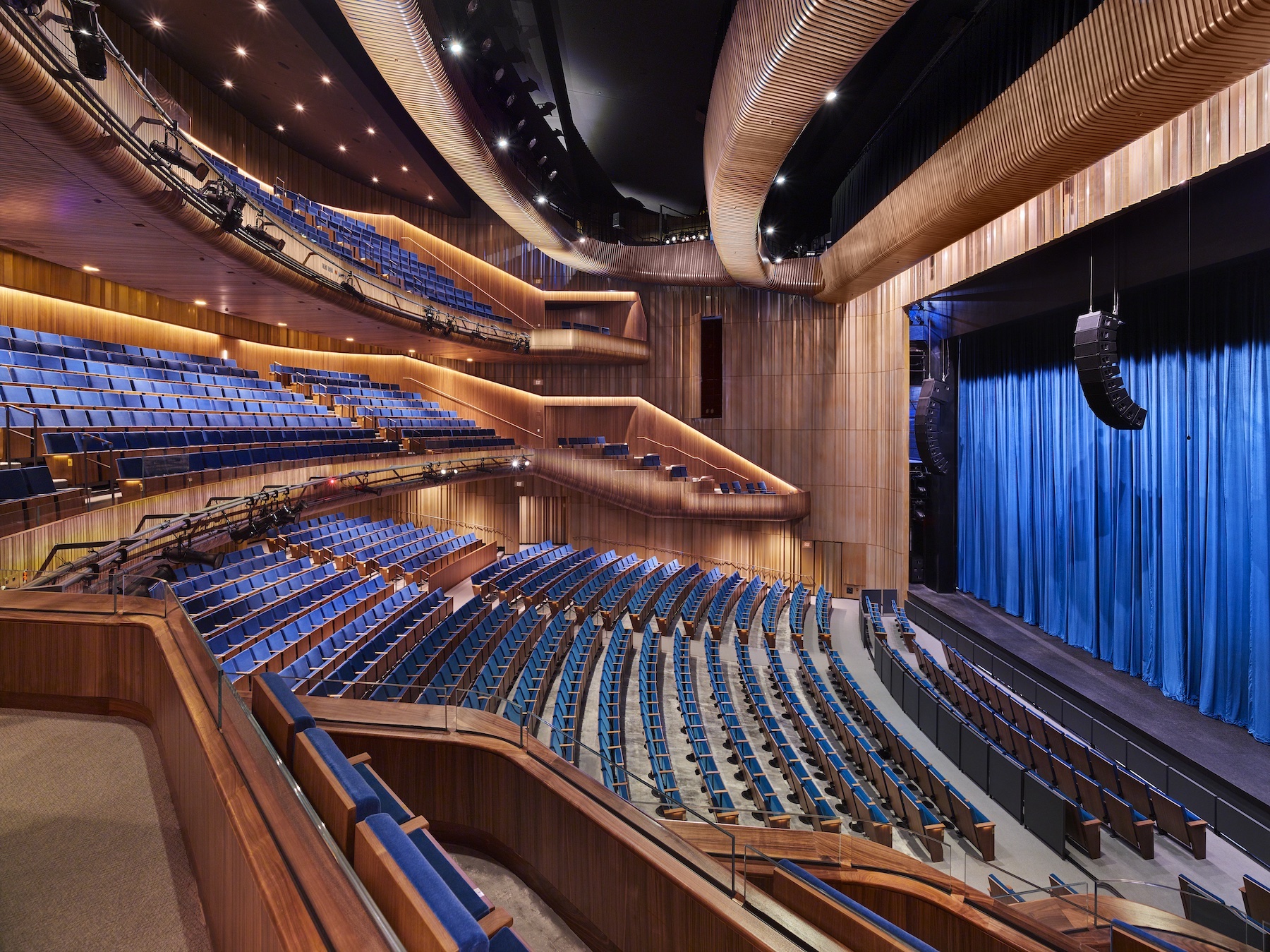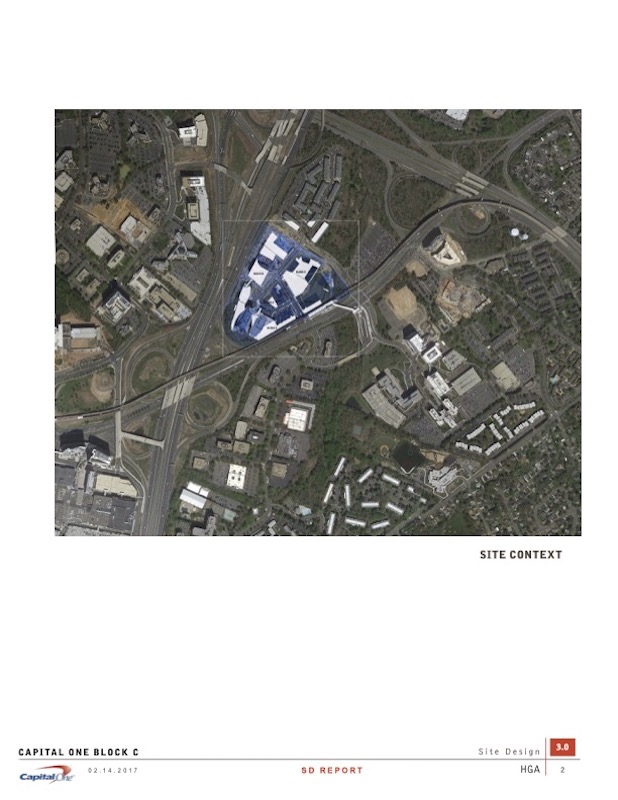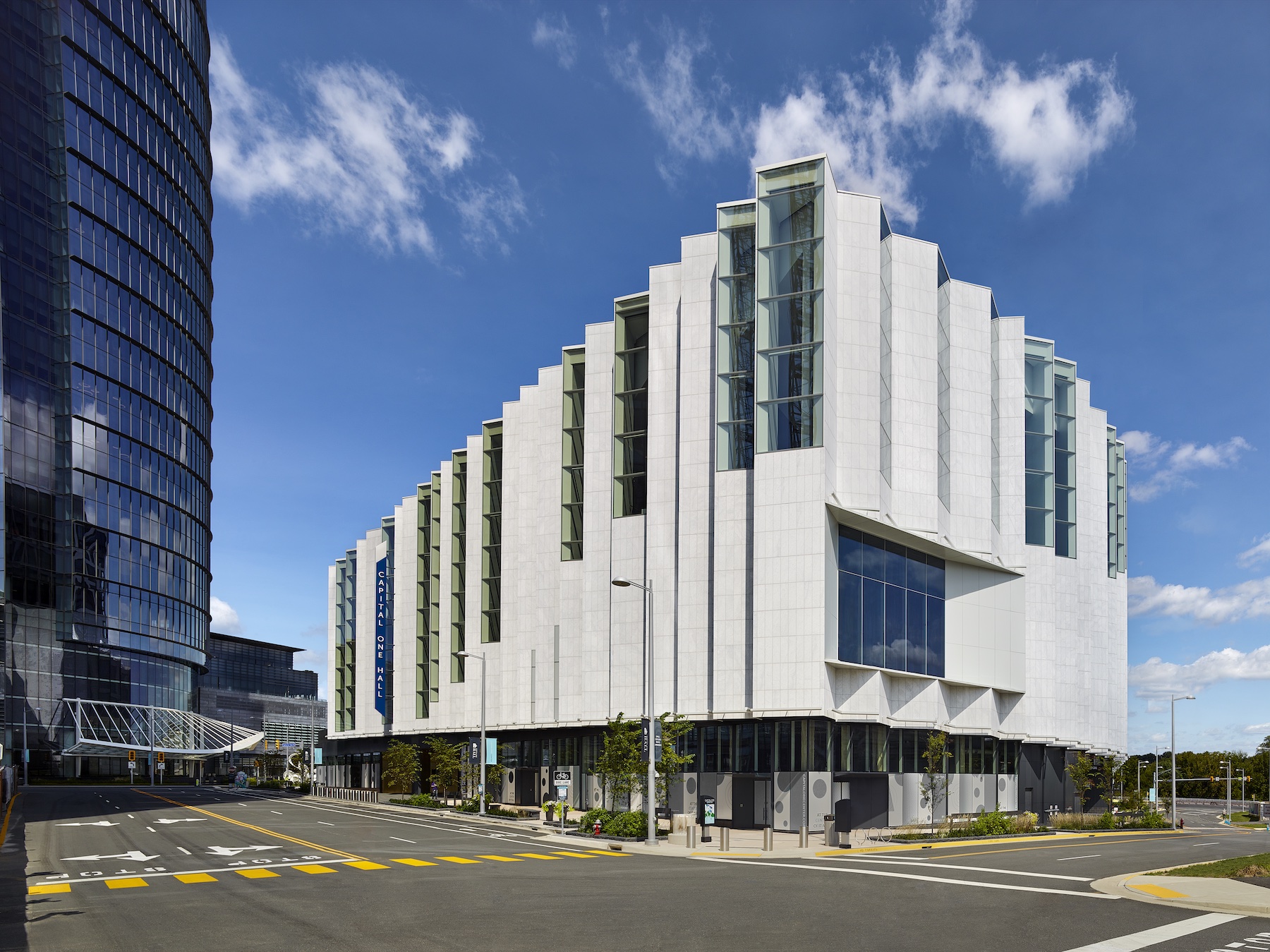On October 1, the 125,000-ft Capital One Hall opened in Tysons, Va., as the centerpiece of the sprawling, 24.5-acre Capital One Center campus that includes the headquarters for Capital One Financial Services Corporation. The Hall, which encompasses several performance, corporate, and gathering spaces that include a 2.5-acre sky park on its roof, is being touted as one of the missing pieces in fulfilling Tysons’ aspiration to be ranked among America’s premier metropolises.
“This complex project will be a destination for all to enjoy and experience,” said Jonathan Griffith, Capital One Center’s Managing Director, in a prepared statement.”
“As a Fairfax County resident, I’ve been watching the evolution of this project for years,” added Scott Cryer, AIA, LEED AP BD+C, Associate Vice President and Principal with HGA, which provided architectural and design services for this project, which has been in the works for two decades, ever since Capital One purchased land that had partly been used previously as a baseball field. What was missing from Tysons, and what the Hall brings to the table, Cryer explained to BD+C in a Zoom call, is a large performance space and an equally prominent public space.
The project team on Capital One Hall included Whiting-Turner Construction (GC), Thornton Tomasetti (SE), ARUP (Code and Life Safety), WSP and GA Design (architectural consultants), and Stages Consultants (theater, acoustics, and AV consultant).
THREE PERFORMANCE SPACES
The building features a 1,600-seat performance hall, a 225-seat Black Box theater called The Vault, a four-story open event space called The Atrium that can accommodate 1,300 people standing or 300 seated at tables, The Terrace that’s adjacent to the Atrium for cocktail parties and receptions of 450 standing or 180 seated, and The Perch, a public rooftop park and amphitheater for smaller concerts with a 230-person capacity.
The top floor of Capital One Hall has The Board Room for executive meetings of up to 20 people. And the ground floor has 21,000 sf of retail space. (The building is next to an existing Wegmans supermarket.) The venue offers a rooftop biergarten and other food and beverage options. (ASM Global manages the building.) Next spring, a miniature golf course and food-truck court are set to open on the roof.
The 300-suite Watermark Hotel that’s adjacent to The Hall was built simultaneously, but with a different project team.
The next phase for this campus project will be the construction of two towers, 30 and 24 stories, respectively, with a total of 900,000 sf of office and retail space that are scheduled for delivery in 2023.

A TIGHT FOOTPRINT TO WORK WITHIN
Michael Koch, AIA, NCARB, a project architect with HGA, noted during the Zoom call that the project team had to navigate what was a relatively tight rhombus-shaped footprint that required “shoehorning” the Hall into a space surrounded by existing (and higher) buildings. “We thought of this as a ‘box within a box’ approach,” Koch says. The performance and gathering spaces within the Hall also sit atop a large loading dock and enclosed parking area, each with limited clearances and depth.

This project presented unique acoustical challenges to prevent different structural elements from “touching,” and to mitigate noise and vibration from people and vehicles within different areas of the building. One solution was to remediate the building’s load paths with acoustical pads “down below and on the roof,” said Michael Cropper, Senior Associate with Thornton Tomasetti. (Those load packs had to meet a three-hour fire rating, as per county mandate, says Cropper.)
Koch added that the “acoustically enhanced hall” includes speakers that are tunable to the specific performance, and embedded behind perforated metal “wrappers” covering the walls.
Capital One Hall’s exterior is distinguished by marble cladding (from an Italian quarry chosen by ARUP) and windows that soar up to 100-ft tall. The site’s water-efficient landscaping includes a 30,000-sf green roof and 16 street-side bioretentions for treating and retaining stormwater. The building’s HVAC and energy recovery systems should reduce its energy consumption by 27 percent compared to a comparable code-compliant building. The project anticipates a LEED 2009 NC Gold certification.
Cryer observed that multifunctional buildings like Capital One Hall are becoming more common in developments around the country that want “density” and aim to be “part of the urban ecology.”
Related Stories
| Aug 11, 2010
Giants 300 University Report
University construction spending is 13% higher than a year ago—mostly for residence halls and infrastructure on public campuses—and is expected to slip less than 5% over the next two years. However, the value of starts dropped about 10% in recent months and will not return to the 2007–08 peak for about two years.
| Aug 11, 2010
Bowing to Tradition
As the home to Harvard's Hasty Pudding Theatricals—the oldest theatrical company in the nation—12 Holyoke Street had its share of opening nights. In April 2002, however, the Faculty of Arts and Sciences decided the 1888 Georgian Revival building no longer met the needs of the company and hired Boston-based architect Leers Weinzapfel Associates to design a more contemporary facility.
| Aug 11, 2010
Team Tames Impossible Site
Rensselaer Polytechnic Institute, the nation's oldest technology university, has long prided itself on its state-of-the-art design and engineering curriculum. Several years ago, to call attention to its equally estimable media and performing arts programs, RPI commissioned British architect Sir Nicholas Grimshaw to design the Curtis R.
| Aug 11, 2010
Silver Award: Hanna Theatre, Cleveland, Ohio
Between February 1921 and November 1922 five theaters opened along a short stretch of Euclid Avenue in downtown Cleveland, all of them presenting silent movies, legitimate theater, and vaudeville. During the Great Depression, several of the theaters in the unofficial “Playhouse Square” converted to movie theaters, but they all fell into a death spiral after World War II.
| Aug 11, 2010
Biograph Theater
Located in Chicago's Lincoln Park neighborhood, Victory Gardens Theater Company has welcomed up-and-coming playwrights for 33 years. In 2004, the company expanded its campus with the purchase of the Biograph Theater for its new main stage. Built in 1914, the theater was one of the city's oldest remaining neighborhood movie houses, and it was part of Chicago's gangster lore: in 1934, John Dillin...
| Aug 11, 2010
Platinum Award: Reviving Oakland's Uptown Showstopper
The story of the Fox Oakland Theater is like that of so many movie palaces of the early 20th century. Built in 1928 based on a Middle Eastern-influenced design by architect Charles Peter Weeks and engineer William Peyton Day, the 3,400-seat cinema flourished until the mid-1960s, when the trend toward smaller multiplex theaters took its toll on the Fox Oakland.







